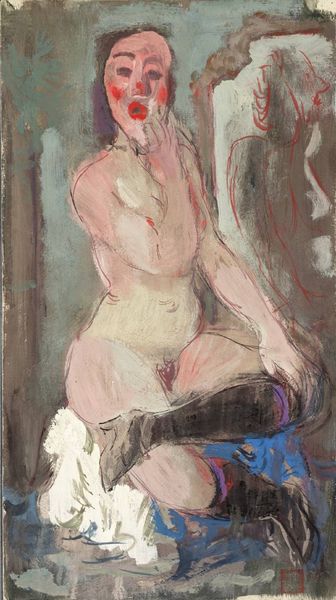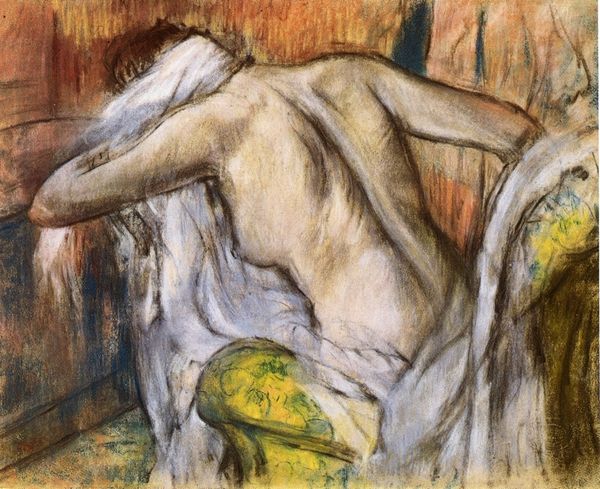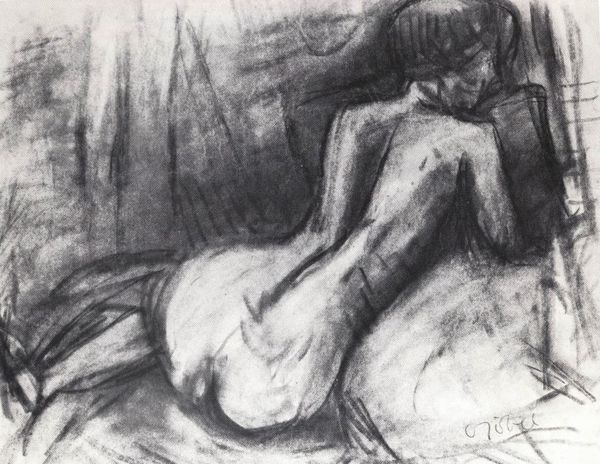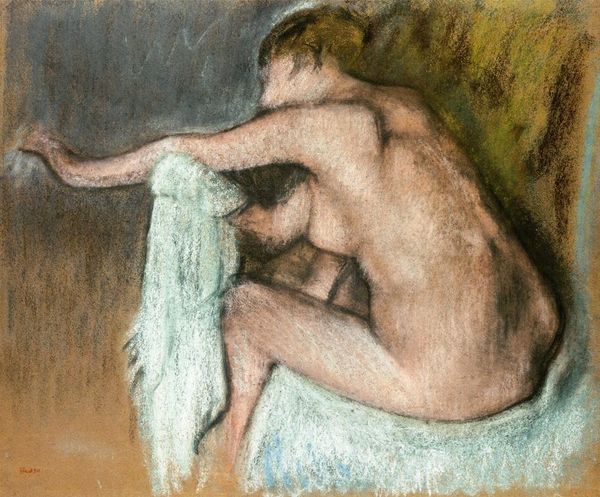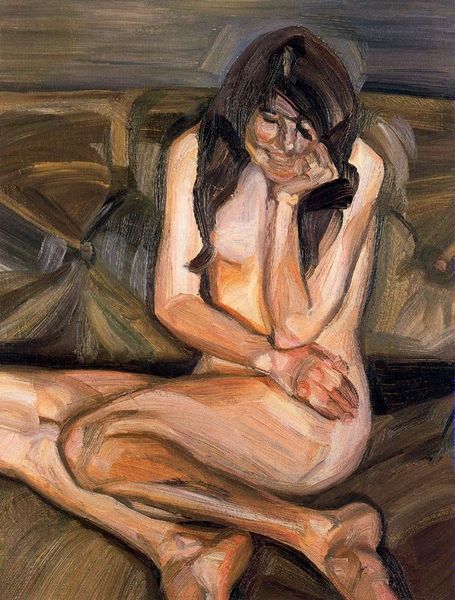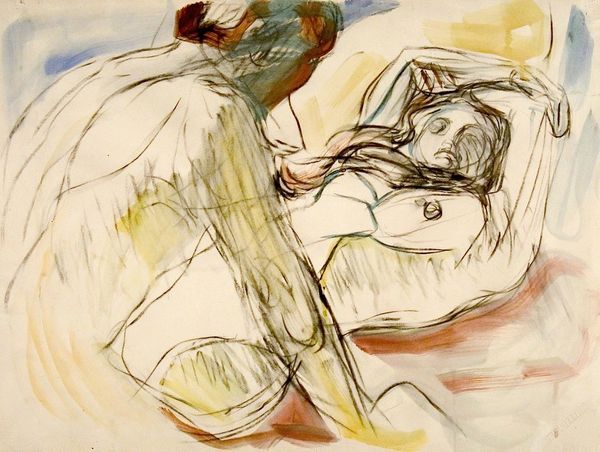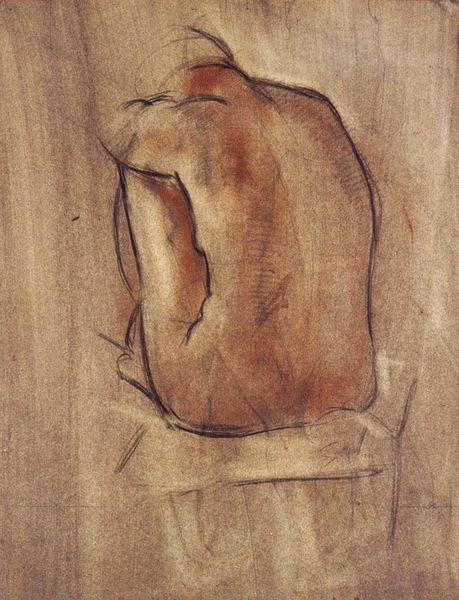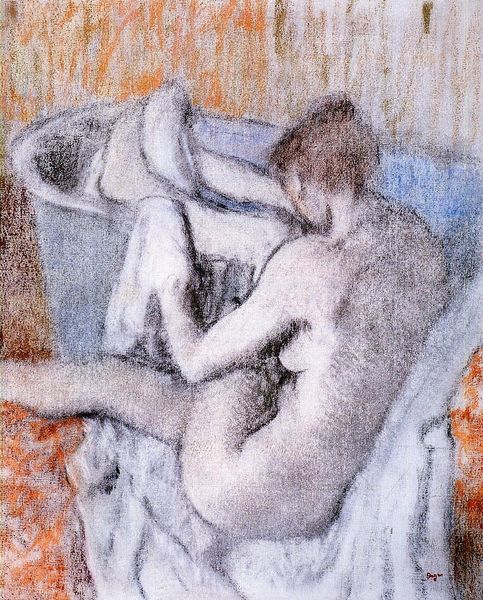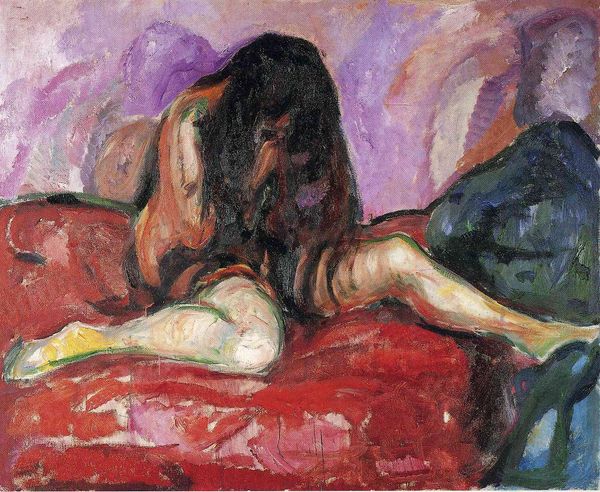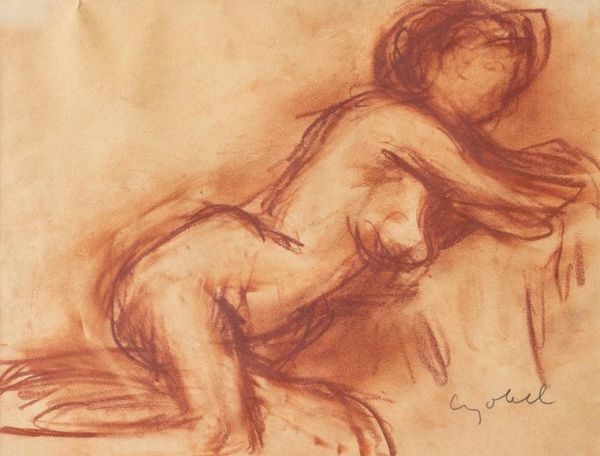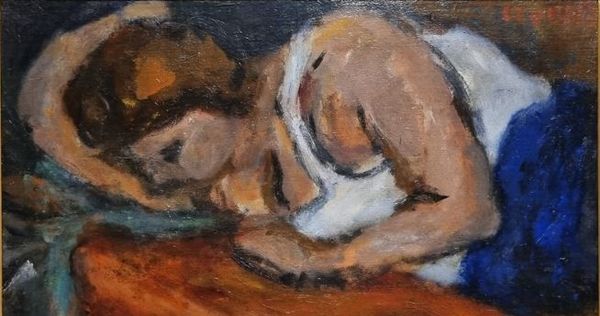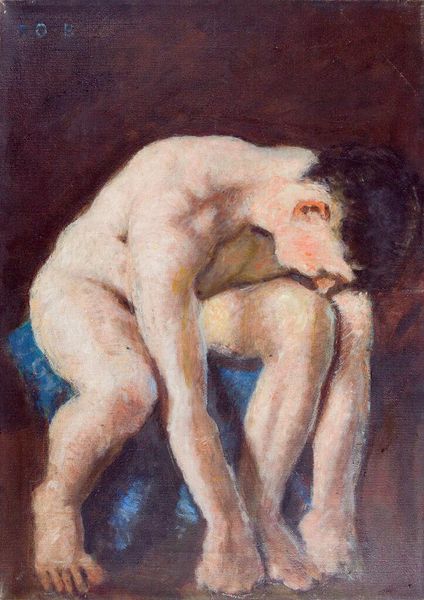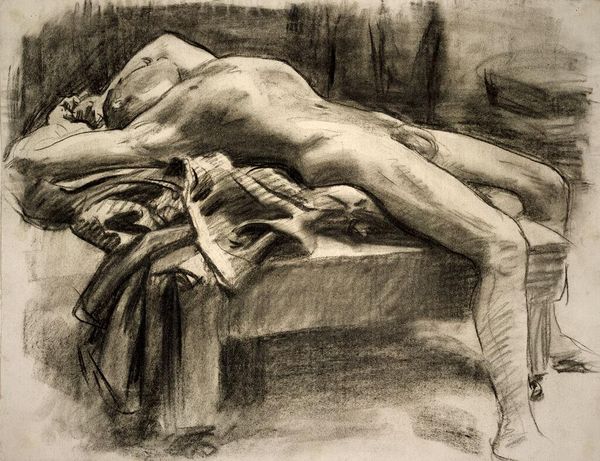
drawing, painting, oil-paint
#
portrait
#
drawing
#
painting
#
oil-paint
#
figuration
#
expressionism
#
portrait drawing
#
nude
#
portrait art
Copyright: Public domain
Curator: Today, we are looking at Samuel Peploe’s oil painting, "Little Nude," created around 1930. Editor: There is such rawness to this work. It looks hastily drawn, almost unfinished, but captures such an intimate, almost vulnerable pose. The figure is almost swallowed by the background. Curator: Peploe was a master of color and form and one of the Scottish Colourists, and his works reflect post-impressionistic techniques, as well as modernist interest in color. This artwork reveals Peploe's preoccupation with capturing the essence of the figure through minimal yet expressive brushstrokes. He plays with conventions of portraiture, inviting questions about viewing and objectification. Editor: Yes, absolutely. Considering that we are encountering a post-impressionistic and modernist approach, it’s interesting to look at how notions of the female gaze and representation function here. Is she reclined on a sofa? Is this his lover? Is he turning the dynamics of traditional nudes and sexuality inside-out? There is also something interesting about the color and tones which subverts her power. It evokes a very somber mood for a piece like this. Curator: We see very soft pinks and grays contrasted with strong brush strokes. He almost deliberately makes the work “ugly,” by not beautifying her. Considering the time in which this was produced and the beginning conversations around female objectification, how much can we read this as subversion and turning expectation on its head? Or is that too much of a reach? Editor: I think it's crucial to analyze the power dynamics at play. What are the ethical implications of displaying nude figures and can we read into this particular one because of its stark tonality? Considering its artistic heritage and society, can it ever fully escape from ingrained gender norms in both fine art and visual culture, however radical Peploe might be trying to be? Curator: Precisely. By studying its visual history we’re not only interpreting the artwork’s aesthetics but examining societal power structures. Editor: Indeed, it's a testament to art's potential as a reflection and, perhaps, even an agent of socio-political discourse. Curator: I agree. The piece offers plenty of conversation points, both then and now.
Comments
No comments
Be the first to comment and join the conversation on the ultimate creative platform.
